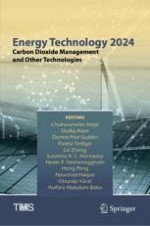This collection is focused on industrial energy sustainability and CO2 management, including processes that improve energy efficiency and reduce or eliminate industrial GHG emissions. Topics address technology areas such as clean energy technologies, innovative beneficiation, smelting technologies, process intensification, as well as CO2 capture and conversion for industrial applications. Areas of interest include, but are not limited to:
· Decarbonizing Materials Processing
· Use of low carbon fuels, feedstock, and renewable energy resources for materials processing.
· Emerging processes and techniques for industrial CO2 capture, conversion/upgrade
· CO2 and other GHG reduction metallurgy in ferrous, non-ferrous and reactive metals processing, including rare-earth metals.
· Energy Efficiency & Industrial Electrification
· Electrification of industrial process heat and electrified production of energy carriers (e.g., hydrogen, ammonia)
· Energy efficiency improvements for materials processing and smart manufacturing for optimized process control
· System integration and thermal integration of process heat, waste heat recovery, and other technologies for industrial energy efficiency
· Sustainability Analysis
· Techno-economic life-cycle, resource efficiency and circular economy modeling of energy-intensive processes and associated material supply chains
· The role of energy education and regulation in energy and materials sustainability
